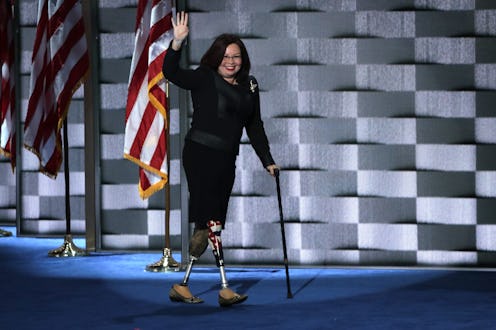Life
Americans With Disabilities Are A Much Larger Group Than You Think

One of the largest minority populations in the United States is a group whose voices and stories are not often heard in conversations about inclusivity. People with disabilities represent about 12.6 percent of people living in the U.S., yet representation of disabled people, especially in media, does not always reflect the full reality of their lives. A recent report from Pew Research Center lists seven facts about Americans with disabilities, helping give a clearer picture on who we need to be including in these conversations.
More than one in eight Americans have a disability, according to Pew’s most recent information from 2015. That works out to be roughly 40 million people in the U.S. who have a severe impairment when it comes to one of six areas as measured by Census Bureau’s American Community Survey: hearing, vision, cognition, walking or climbing stairs, difficulty with self-care, or difficulty with independent living. That number does not include people who are living in institutions nor does it include people who have less severe disabilities. When you look at the percentage of non-institutionalized people in the U.S. who had any degree of disability in 2010, within the aforementioned measurements, that number jumps to about 18.7 percent.
When you compare these numbers to the populations of other minority groups, that 12.6 percent becomes even more significant. Black Americans make up 13.3 percent of the U.S. population, according to 2016 estimates from the U.S. Census Bureau. 17.8 percent of Americans are Hispanic. Asian Americans are about 5.7 percent of the population. 2.6 percent of Americans are two or more races.
The racial makeup of people with disabilities is important as the likelihood of having a disability varies depending on race. According to this recent Pew report, American Indians or Alaskan Natives were the group most likely to report having disability at 17.7 percent. Black and white Americans were about equally as likely to have a disability, at 14.1 percent and 13.9 percent respectively. Asian Americans were the least likely to report having a disability at 6.9 percent.
Age is also a significant factor in the likelihood of having a disability. Almost half of people ages 75 and older have a disability. The same is true of more than a quarter of Americans ages 65 to 74. However, people ages 35 to 64 make up the largest age demographic of people with disabilities, at 16 million American in 2015.
Political engagement is important to many people with disabilities. Disabled Americans were more likely to follow 2016 Presidential campaign closely than those without a disability, according to Pew. American with disabilities were also more likely to say they “thought a lot about the election” and “it really matters who wins the election” than people without a disability.
People with disabilities are fighting for economic equality for all, as having a disability also significantly affects a person’s earning power. (According to the 2015 U.S. Census, the median earnings for disabled people was less than 70 percent of the median income for people who don’t have a disability.) People with disabilities are fighting for your health care. Because people with disabilities are disproportionately affected by things like health care and wealth distribution they are showing up for their rights and, in turn, showing up for ours.
While certain demographics are more likely to have a disability, disabled people are part of every social, economic, and racial demographic in the United States. There are disabled people who are black, white, brown, gay, straight, bi, male, female, trans, Christian, Muslim, Jewish, and every demographic beyond and in between. To put intersectionality into a sentence: Those one in eight Americans with a disability have lives and identities beyond “disabled.” Such is true of everyone.
When we talk about health care rights, women's rights, civil rights, and human rights, we need to make sure the rights of disabled people are included in the conversation. This entails making sure people with disabilities are helping lead those conversations.